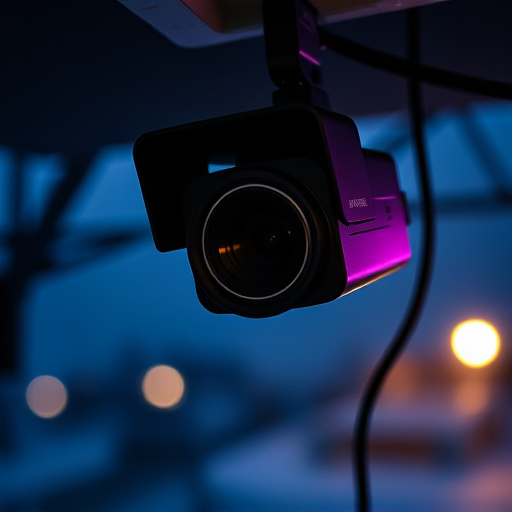Detecting hidden spy cameras with remote viewing capabilities leverages light reflection analysis on surfaces. Rough or irregular surfaces scatter light, revealing unusual reflection patterns indicative of camera lenses. Advanced tools use algorithms to identify subtle variations in lighting, making it a powerful countermeasure against sophisticated spying attempts in high-security areas. Upon detection, remove the device, strengthen security, and conduct regular audits for enhanced privacy protection.
Uncover the secrets behind a subtle yet powerful surveillance tactic—the spy camera. This comprehensive guide explores an innovative detection method utilizing light reflection techniques. Learn how understanding basic optics can reveal hidden cameras, from identifying common placement angles to employing advanced software for analysis. Discover practical steps to counter this modern-day threat, ensuring your privacy in an era of remote viewing spy cameras.
- Understanding Light Reflection Basics for Spy Camera Detection
- The Science Behind Detecting Hidden Cameras Using Reflections
- Identifying Spy Cameras: Common Placement and Angles to Observe
- Advanced Techniques: Tools and Software for Light Reflection Analysis
- Preventing and Countering Spy Cameras: Measures After Detection
Understanding Light Reflection Basics for Spy Camera Detection
Understanding how light interacts with surfaces is key to detecting hidden spy cameras, particularly those equipped with remote viewing capabilities. In simple terms, light reflects off objects in a predictable manner, and this phenomenon can be harnessed as an early detection system. When light encounters a smooth surface like glass or metal, it bounces back without significant distortion. However, if the light hits a rough or irregular surface, such as a poorly installed camera lens, part of the light is scattered, creating a subtle change in reflection patterns.
By employing specialized equipment to analyze these reflections, individuals can identify unusual behavior indicative of a spy camera with remote viewing capabilities. This method relies on detecting even the tiniest deviations from normal light reflection, which may be caused by the presence of an improperly concealed surveillance device. Such techniques have proven valuable in various settings, ensuring security professionals and privacy advocates alike are equipped to counter sophisticated spying attempts.
The Science Behind Detecting Hidden Cameras Using Reflections
The science behind detecting hidden cameras using reflections involves utilizing light’s behavior and its interaction with surfaces. When a spy camera with remote viewing capabilities is present, it emits light that reflects off various objects in a room or space. By carefully analyzing these reflected lights, trained professionals can identify unusual patterns, anomalies, or distortions that might indicate the presence of an invisible device. This technique leverages the fact that even tiny variations in light reflection can reveal hidden objects.
The remote viewing aspect adds another layer of complexity and importance to this process. It allows for discreet and non-intrusive surveillance, making it a preferred method for security professionals. By remotely controlling cameras and capturing reflections from different angles, they can systematically search for and confirm the existence of spy cameras, ensuring a more comprehensive and effective sweep.
Identifying Spy Cameras: Common Placement and Angles to Observe
Identifying spy cameras, especially those equipped with remote viewing capabilities, requires a keen eye for detail and an understanding of their common placements and angles. Often, these devices are discreetly positioned in areas that offer unobstructed lines of sight, such as corners, above doors, or on ceilings. They might appear as small, seemingly innocuous objects like clocks, light switches, or even smoke detectors.
To detect these hidden cameras, observe for any unusual lighting or reflections. Spy cams often emit a faint glow, especially when active, which can be detected by looking for subtle light sources in normally dark corners or through reflection on surfaces like glass or metal. Angles are also crucial; checking for any unusual angles or shadows cast by objects can reveal the presence of hidden lenses.
Advanced Techniques: Tools and Software for Light Reflection Analysis
In the sophisticated realm of spy camera detection, advancements in technology have given rise to innovative techniques like light reflection analysis. This method leverages specialized tools and software designed to scrutinize subtle variations in light patterns. By capturing and processing reflected light from suspected surveillance devices, these tools can identify unique signatures that indicate the presence of hidden cameras, especially those with remote viewing capabilities.
The process involves using advanced algorithms to analyze pixel data, color intensities, and light distribution. Software solutions often incorporate machine learning algorithms that can learn and adapt to new reflection patterns, making them highly effective against increasingly sophisticated spy cameras. This technology is particularly useful for professionals tasked with ensuring privacy in high-security areas, as it enables them to uncover hidden surveillance equipment undetected by conventional methods.
Preventing and Countering Spy Cameras: Measures After Detection
After detecting a spy camera, whether it’s a hidden device with remote viewing capabilities or a more sophisticated setup, taking immediate action is crucial to prevent further surveillance and protect privacy. The first step is to physically remove the camera and any associated equipment. This involves carefully inspecting every corner of an area, especially places where cameras are commonly hidden, such as corners, ceiling fans, or behind electronic devices.
Additionally, enhancing security measures can help counter potential future spy camera installations. This includes upgrading security systems with advanced technology, like motion detectors and high-resolution surveillance cameras, which make it harder for unauthorized individuals to set up hidden devices. Regular security audits and employee training on privacy awareness can also act as strong deterrents against covert surveillance attempts using spy cameras with remote viewing capabilities.
The detection of spy cameras using light reflection techniques offers a sophisticated approach to identifying hidden surveillance devices. By understanding light behavior, leveraging scientific principles, and employing advanced tools like specialized software, individuals can effectively navigate and counter potential privacy threats. This article has provided insights into the basic concepts, common tactics for spy camera placement, and robust measures to prevent their use. With these strategies in hand, users can ensure a more secure environment, making it much harder for unseen eyes to invade personal spaces through remote viewing spy cameras.
